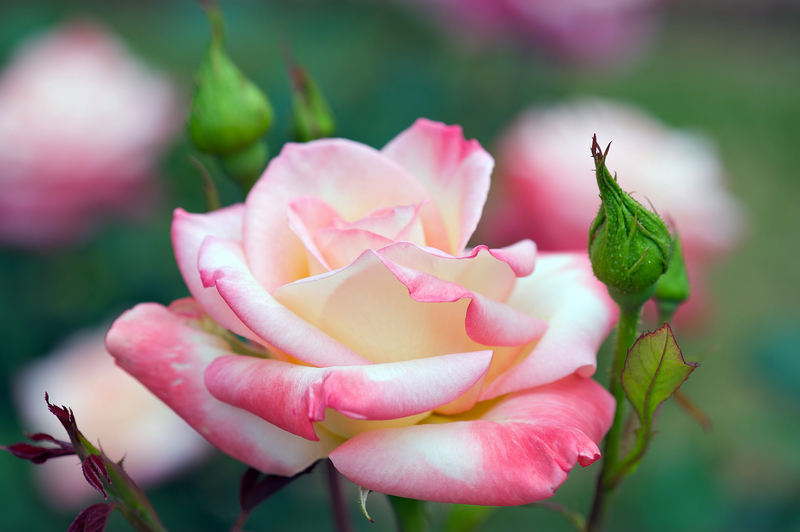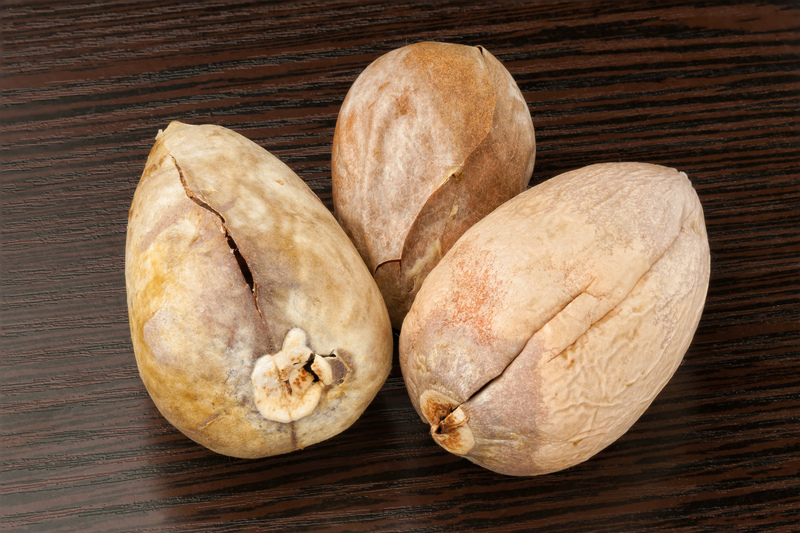Herb Gardening for Every Yard
Posted on 26/08/2025
Herb Gardening for Every Yard: A Comprehensive Guide
Herb gardening is a rewarding way to add flavor to your kitchen, fragrance to your landscape, and beauty to your outdoor living spaces. Whether you have a spacious yard, a cozy balcony, or a small patio, cultivating herbs can fit any lifestyle and environment. In this comprehensive guide, we will explore herb gardening for every yard, providing practical tips, best practices, and creative ideas for all types of spaces.
Why Grow Herbs at Home?
Growing your own herbs comes with a host of benefits:
- Freshness: Homegrown herbs are fresher and more flavorful than store-bought ones.
- Cost-effective: A single plant can often replace countless store purchases.
- Health: Herbs are packed with vitamins, antioxidants, and other beneficial compounds.
- Beauty: Herb plants can add greenery and color to your outdoor or indoor spaces.
- Sustainability: Growing herbs reduces packaging waste and the carbon footprint associated with transporting fresh herbs.
- Therapeutic: Gardening has proven mental health benefits including stress relief and mindfulness.

Choosing the Right Herbs for Your Space
Not sure which herbs to grow? Consider these factors:
- Climate: Some herbs thrive in hot, sunny climates (like basil and rosemary), while others prefer cooler, moist conditions (like parsley and mint).
- Space: Compact herbs such as thyme and chives work well for containers, while sprawling plants like oregano and sage may need more room.
- Purpose: Are you growing herbs for cooking, tea, or ornamental use? Choose varieties accordingly.
- Experience level: Beginners may find it easier to start with hardy, low-maintenance herbs.
Here's a list of popular and versatile herbs ideal for most home gardens:
- Basil - A favorite for Italian and Thai dishes.
- Parsley - An all-purpose garnish and flavor booster.
- Chives - Excellent for salads, eggs, and potato dishes.
- Mint - Refreshing for drinks, desserts, and savory recipes.
- Rosemary - Aromatic and beautiful, great for roasts.
- Sage - Perfect for fall flavorings and stuffing.
- Thyme - Versatile for many cuisines.
- Dill - Must-have for pickling and fish dishes.
- Cilantro/Coriander - Essential for salsas and international fare.
- Oregano - Essential for Mediterranean cooking.
Designing Your Herb Garden for Any Yard
Herb gardening for small spaces or large yards is equally possible with the right approach. Let's examine some inspiring ideas for different yard types.
1. Container Herb Gardens
If you lack gardening beds, containers offer the ultimate flexibility. Pots, window boxes, buckets, and even repurposed items can become productive herb gardens. Here's how to succeed:
- Choose the right container size: Most herbs thrive in pots 6-12 inches deep. Ensure drainage holes.
- Soil mix: Use high-quality potting soil, ideally with compost or organic amendments.
- Location: Place your containers in a spot with at least 6 hours of sun daily.
- Watering: Potted herbs require regular watering, but avoid waterlogging.
- Grouping: Grow herbs with similar water and light needs together for convenience and health.
2. Raised Bed Herb Gardens
If you have some yard space, raised beds provide better control over soil quality and drainage. Some advantages:
- Easier access: No stooping or kneeling for planting and harvesting.
- Improved soil: Fill with a customized soil mix for optimal herb growth.
- Better drainage: Reduces the risk of root rot.
- Defined space: Keeps herbs organized and contained.
3. Vertical Herb Gardens
For tiny yards, balconies, or even indoor spaces, vertical gardens allow you to grow more in less space. Strategies include:
- Wall-mounted planters, stacked pots, or pocket garden systems.
- Using trellises for climbing herbs like nasturtiums and some varieties of mint.
- Hanging baskets for trailing herbs like thyme or oregano.
4. Traditional In-Ground Herb Gardens
If your yard has space for traditional beds, you can integrate herbs into your landscape design:
- Design herb borders along pathways for texture and scent.
- Create a circular herb garden, also known as an herb wheel, for an ornamental feature.
- Mix herbs with flowers and vegetables in a cottage garden arrangement for biodiversity and natural pest control.
How to Start Your Herb Garden
Starting an herb garden--whether from seeds or young plants--is easier than you might think. Follow these steps for a flourishing, productive herb plot.
1. Site Selection
- Most herbs need 6-8 hours of sunlight daily. Choose a sunny spot if possible.
- Avoid low-lying, boggy areas (herbs dislike soggy roots).
2. Soil Preparation
- Use loose, fertile, well-draining soil. Amend with compost for organic matter and nutrients.
- Test soil pH; most herbs prefer slightly acidic to neutral soils (pH 6.0-7.0).
3. Sowing Seeds or Planting Starts
- Sow seeds: Follow packet instructions for depth and spacing.
- Transplant seedlings: Gently loosen transplants and water well after planting.
- Spacing: Give each herb enough room for air circulation (usually 8-18 inches apart depending on species).
4. Watering
- Water regularly, especially during dry spells, but do not allow soil to remain waterlogged.
- Container gardens may require more frequent watering than in-ground beds.
5. Fertilizing
- Most herbs are light feeders. An application of compost or organic fertilizer every few weeks is sufficient.
- Avoid high-nitrogen fertilizers, which can diminish flavor.
Best Practices for Herb Gardening Success
- Prune regularly: Pinch back the growing tips to encourage bushiness and prolong harvest.
- Watch for pests: Herbs are generally resistant, but keep an eye out for aphids, spider mites, and caterpillars.
- Rotate crops: Change herb locations from season to season to prevent soil depletion and disease.
- Mulch: Apply a thin layer of mulch to retain moisture and suppress weeds, but don't smother the stems.
- Harvest properly: Harvest leaves in the morning when their oils are most concentrated. Use clean, sharp scissors or snips.
Herb Gardening Tips for Every Yard Size
Herb Gardening in Small Yards or Apartments
- Utilize window sills, vertical planters, wall pockets, or railing-mounted boxes.
- Select compact varieties like Greek oregano, spicy globe basil, or dwarf chives.
- Consider a kitchen herb garden in small pots for easy access while cooking.
Herb Gardening for Large Yards
- Dedicate a section to a formal herb knot garden or sprawling herb borders.
- Plant perennial herbs (lavender, sage, thyme) that will return year after year.
- Integrate herbs with vegetables and flowers to attract pollinators and deter pests naturally.
Creative Ideas for Every Herb Garden
- Plant herb spirals--a vertical, spiraling mound of stones filled with soil--maximizing sunlight and water use while fitting into a small footprint.
- Create an edible landscape by tucking herbs into flower beds or along walkways.
- Use hanging baskets for trailing herbs like creeping thyme or nasturtium.
- Repurpose household items (mason jars, tin cans, pallets) for unique container herb gardens.
- Make a small water feature the centerpiece of your herb garden for tranquility and wildlife attraction.
Harvesting and Using Homegrown Herbs
One of the joys of herb gardening for every yard is harvesting fresh herbs year-round.
- Snip as needed: Use scissors to cut only what you require, encouraging new growth.
- Drying: Dry excess herbs by hanging them in small bunches or using a dehydrator. Store in airtight containers.
- Freezing: Chop and freeze herbs in ice cube trays with water or oil for soups and sauces.
- Fresh Use: Add to salads, soups, marinades, teas, and even desserts.
Enjoy Year-Round Herb Gardening
With a little planning, you can enjoy herb gardening through all seasons:
- Grow tender annuals like basil outdoors in summer and indoors on sunny windowsills during winter.
- Perennial herbs (rosemary, sage) can be overwintered with protection or brought indoors in pots.
- Grow slow-growing herbs like oregano and thyme in containers and rotate them inside for off-season harvesting.

Overcoming Common Herb Gardening Challenges
- Poor growth: Check that your herbs receive enough sun, water, and drainage.
- Yellow leaves: Usually a sign of over-watering or poor drainage. Let soil dry slightly between watering.
- Leggy plants: Provide more light or prune regularly to keep plants compact.
- Low flavor: Over-fertilization can result in bland herbs. Stick to organic compost and avoid heavy feeding.
Conclusion: Start Your Herb Gardening Journey Today!
No matter your space or experience level, herb gardening for every yard is an accessible, rewarding hobby that brings flavor, fragrance, and beauty to your home. With so many options and creative techniques, anyone can cultivate a thriving herb garden--from a sunny windowsill in an apartment to a sprawling suburban yard. Plan thoughtfully, start small, and let your herb garden grow as you do.
The satisfaction of snipping fresh herbs for your meals will make every effort worthwhile. With the tips, techniques, and inspiration provided in this comprehensive guide, you're ready to enjoy the endless possibilities of home herb gardening--in every yard, all year round.

